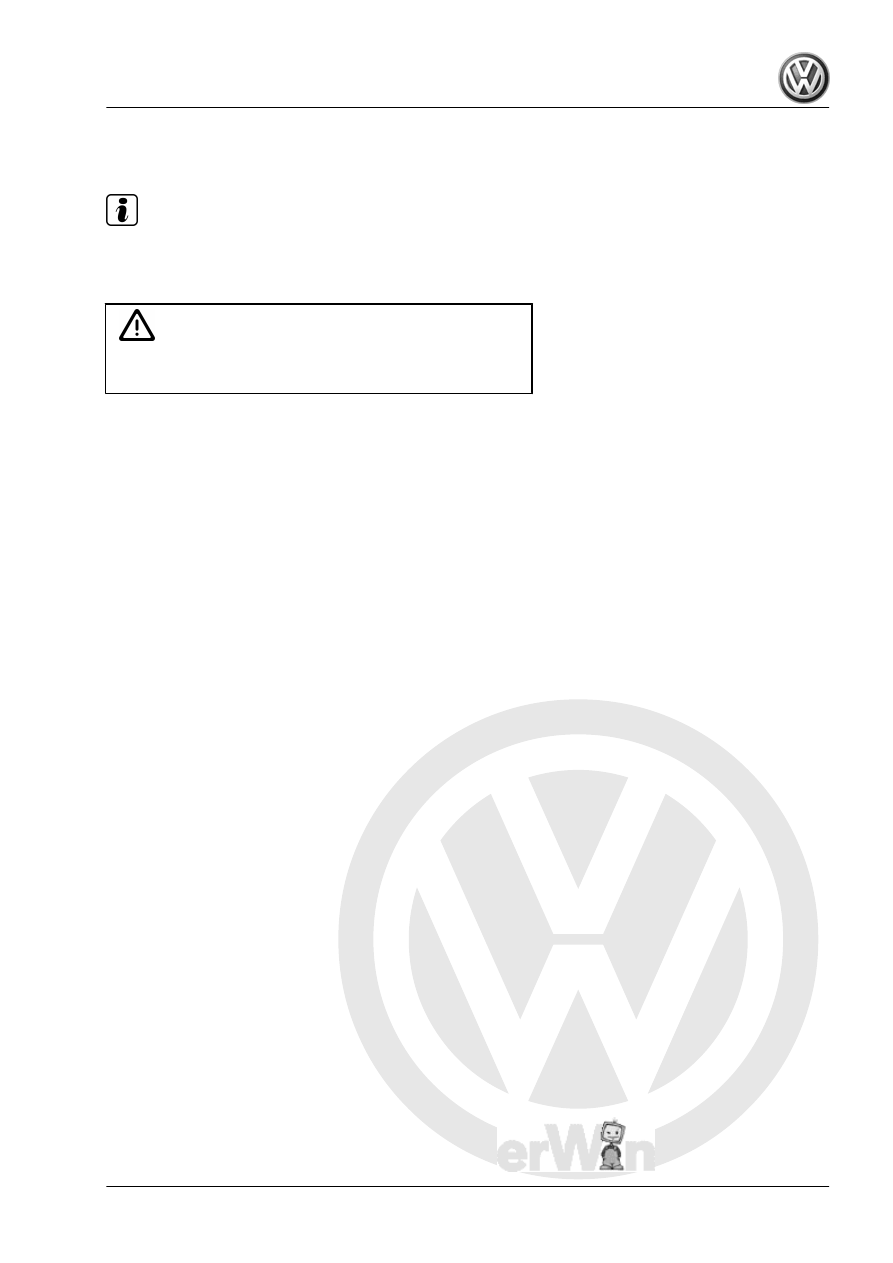Volkswagen Golf / Golf GTI / Golf Variant. Service manual - part 876

1.5.2
Wheel Changing
Warm Up Cold Tires to the Minimum Mounting Temperature
Note
This applies also to ultra high performance tires (height- / width
ration smaller/same 45% and speed rating symbol larger than/
same as V).
WARNING
The minimum mounting temperature for a tire should be be‐
tween 15 °C and 30 °C (59 and 86 °F) in the center of the tire.
• For injury-free mounting, the upper sidewall and the upper
bead inside must be minimum 15 °C (59 °F).
• The internal temperature is called the core temperature.
• Rubber is a poor heat conductor, and for this reason, a cold
tire must exposed to a temperature controlled environment
until the inner rubber layers have warmed up to at least 15 °C
(59 °F).
• The temperature of the tire surface during the warm-up phase
should not be considered as the temperature on the inside of
the tire.
• So that the cold tires warm up quickly, never stack them one
on top of the other. They should be stored separated from each
other so that the warm air can “circulate” around them.
• Never use a room heater or a hot air gun to warm up tires
because the surface temperature will heat up very quickly to
a critical temperature.
• Using warm water or warm air (maximum 50 °C (122 °F)) is
the only way to warm a tire safely.
• If cold tires (below 0 °C (32 °F)) are brought into a warm en‐
vironment (above 0 °C), then a layer of ice will form on the
surface of the tire. This layer, caused by the condensation of
the humidity, shows that the tire has begun to absorb the
warmth.
• Once the layer of ice starts to melt, wipe up the water with a
rag so that the warming up process will not be slowed down.
Warm-Up Time
♦ Tires warmer than 0 °C (32 °F) must be stored at minimum 19
°C (66.2 °F) for at least 2 hours.
♦ Tires colder than 0 °C (32 °F) must be stored at minimum 19
°C (66.2 °F) for at least 2.5 hours.
Recommendations:
♦ If possible, let the tires stand in the shop for 1 day before
mounting them
♦ Store them on an insulated surface, a wood pallet or some‐
thing similar.
♦ Position the tires so that they can be “surrounded” by the warm
air.
♦ Wipe off the sweat